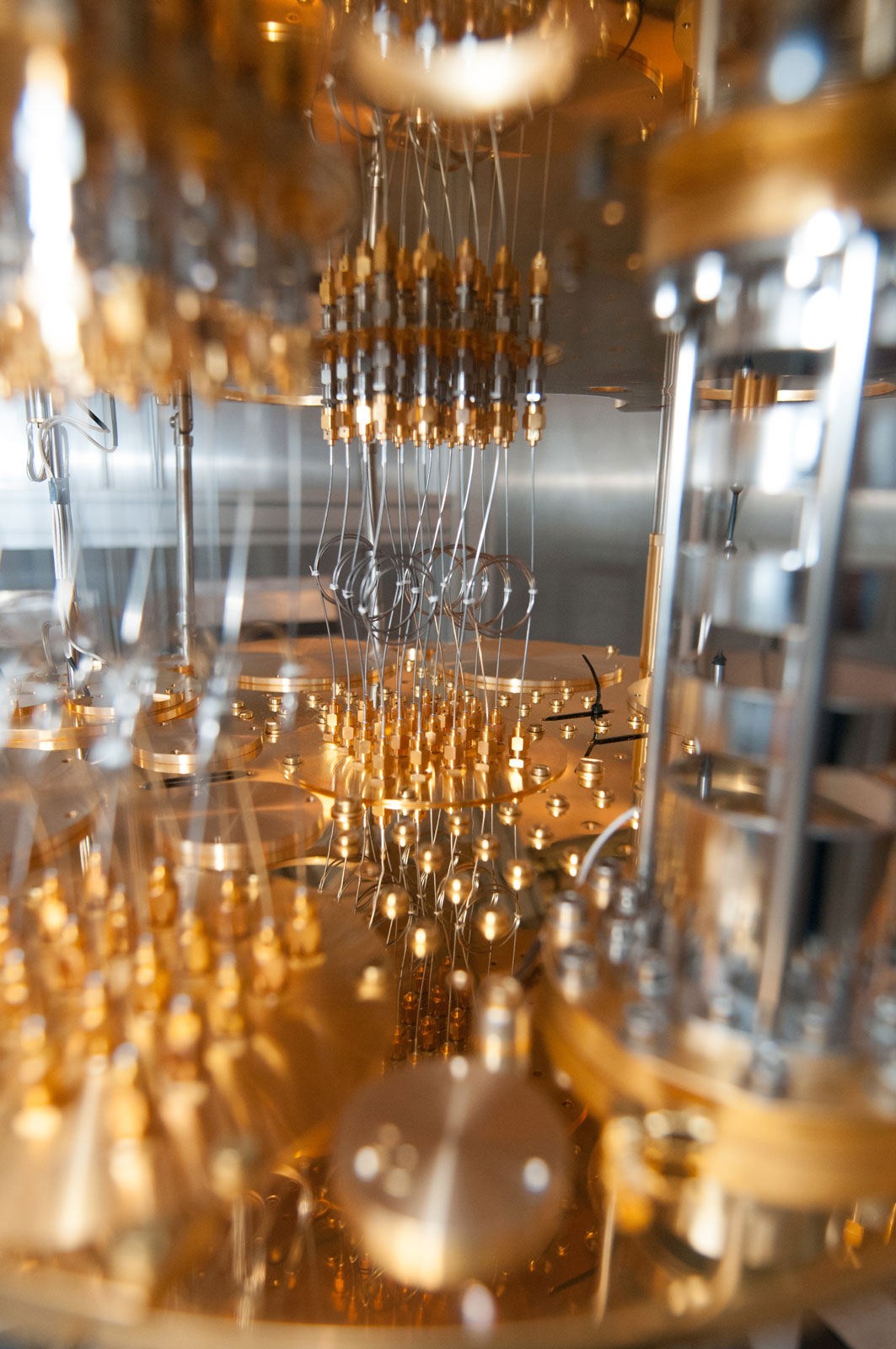We’d have more quantum computers if it weren’t so hard to find the damn cables

Blake Johnson spends a lot of time thinking about things like superconducting cables and supercooled refrigerators. As the vice president of quantum engineering at Rigetti Computing, a startup that makes quantum computers, Johnson is responsible for finding and acquiring the components needed to put the machines together.
It’s challenging, because what was once an esoteric, experimental technology is morphing into more of a mainstream one championed by giant companies such as IBM, Google, and China’s Alibaba, as well as by ambitious startups like Rigetti and IonQ. As a result, demand is growing much faster than supply in some critical areas.
For instance, it can take many months—and sometimes a year or more—to get hold of specialized dilution refrigerators that can be cooled to temperatures colder than outer space to help create quantum bits, or qubits, which are the key to quantum computers’ power. Another choke point, says Johnson, is the specialized cabling needed to transmit microwave signals that control qubits.
The long lead times needed to acquire some components are hindering progress. “This slows down the ability of teams to work in parallel on research in the field,” says Irfan Siddiqi, a professor at the University of California, Berkeley.
Exotic tech
One big reason for the headache is that quantum computers can’t use much of the infrastructure developed for classical machines. “They are based on exotic principles, and that means they have really exotic hardware,” notes Chris Monroe, a professor at the University of Maryland and the CEO of IonQ.
Unlike classical bits, which can represent either a 1 or a 0, qubits are particles such as atoms or electrons that can occupy a quantum state of both 1 and 0 at the same time, taking on a definite value only when they are measured. They can also influence one another via an almost mystical process known as entanglement.
These properties could one day enable a quantum machine to outperform even the most powerful classical supercomputer. But producing and managing qubits is still a massive engineering challenge.
Rigetti, like Google and IBM, is focused on using electrons flowing through superconducting wires cooled to extreme temperatures, which explains the need for the dilution fridges. The problem is that these huge cylinders, which can cost between $500,000 and $1 million each, are custom-made, and researchers say that only a few companies, like BlueFors in Finland and Oxford Instruments in the UK, are producing high-quality ones.
The fridges also require a combination of gases for supercooling, including helium-3, an isotope of helium that Johnson says is “excruciatingly hard” to find. It’s typically a by-product of nuclear research and weapons programs run by governments, which tightly control availability. The gas is so rare that it can cost up to $40,000 for the amount needed for a fridge.
Cable company
Then there are those superconducting cables that carry the signals used to control qubits. These are specially designed to conduct very little heat so that they don’t disrupt qubits’ delicate quantum state inside the fridges. Johnson says just one main manufacturer supplies them, a Japanese company called Coax Co.
Quantum computers can be built in other ways that don’t rely on cryogenics, but these face their own challenges. Monroe’s company, for instance, traps individual atoms in electromagnetic fields on a silicon chip in an ultra-high-vacuum chamber. Lasers are then used to control the atomic qubits.
To get the process to work, the chip must have small deposits of gold on it. But standard silicon manufacturing plants, or fabs, aren’t set up to handle such specialized requirements. IonQ is putting together a team to develop its own designs and to drum up external interest in making them.
UC Berkeley’s Siddiqi says he’s using speeches at conferences like DesignCon, a big electronic-components event in Silicon Valley later this month, to encourage more companies to take an interest in the quantum industry. The new US national plan to advance quantum information science, and a similar one in Europe, may also stimulate more activity among potential suppliers.
Startups could help, too. A young company in the Netherlands, Delft Circuits, is already developing technology to help monitor and control qubits, including some specialized cables for carrying microwave signals.
Jakob Kammhuber, its chief technology officer, says that while quantum computers are stretching to manage around 100 qubits today, that number will have to soar dramatically for the machines to be really useful, and innovative hardware solutions will quickly be needed to control them.
Deep Dive
Computing
How ASML took over the chipmaking chessboard
MIT Technology Review sat down with outgoing CTO Martin van den Brink to talk about the company’s rise to dominance and the life and death of Moore’s Law.
How Wi-Fi sensing became usable tech
After a decade of obscurity, the technology is being used to track people’s movements.
Why it’s so hard for China’s chip industry to become self-sufficient
Chip companies from the US and China are developing new materials to reduce reliance on a Japanese monopoly. It won’t be easy.
Stay connected
Get the latest updates from
MIT Technology Review
Discover special offers, top stories, upcoming events, and more.